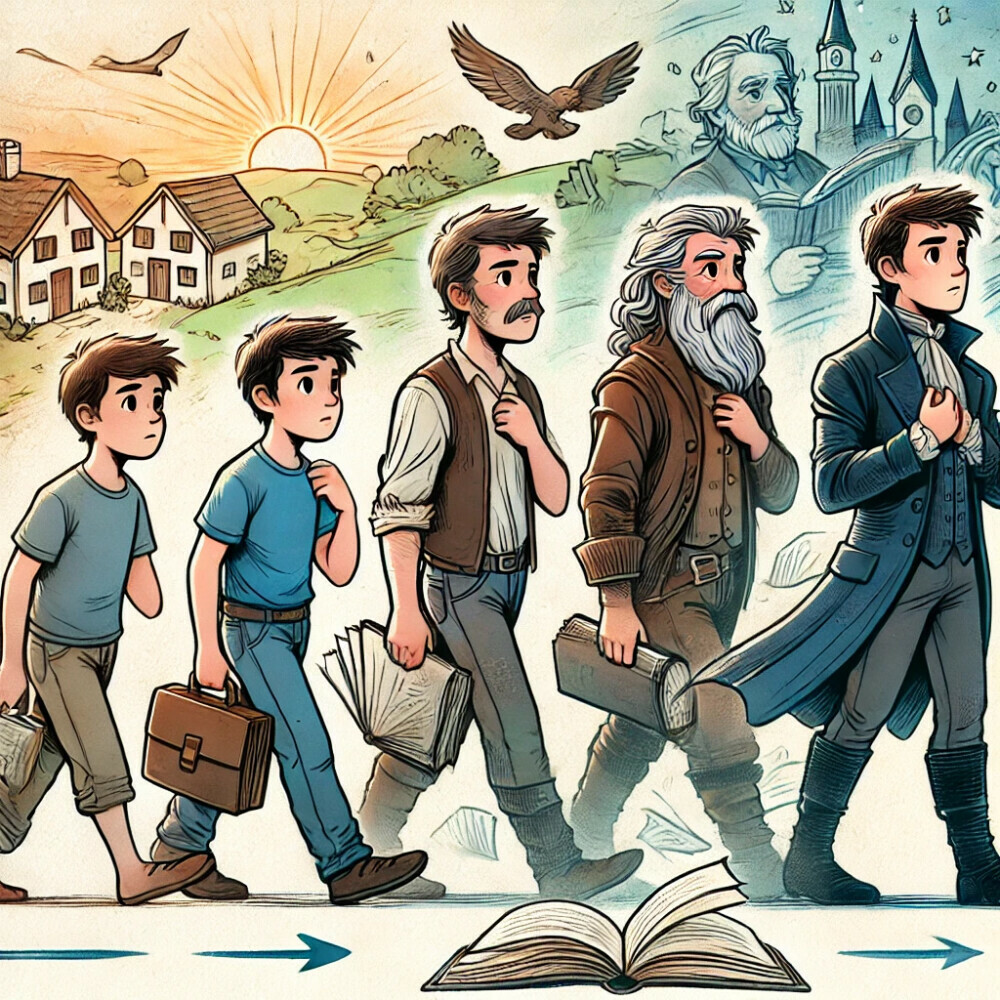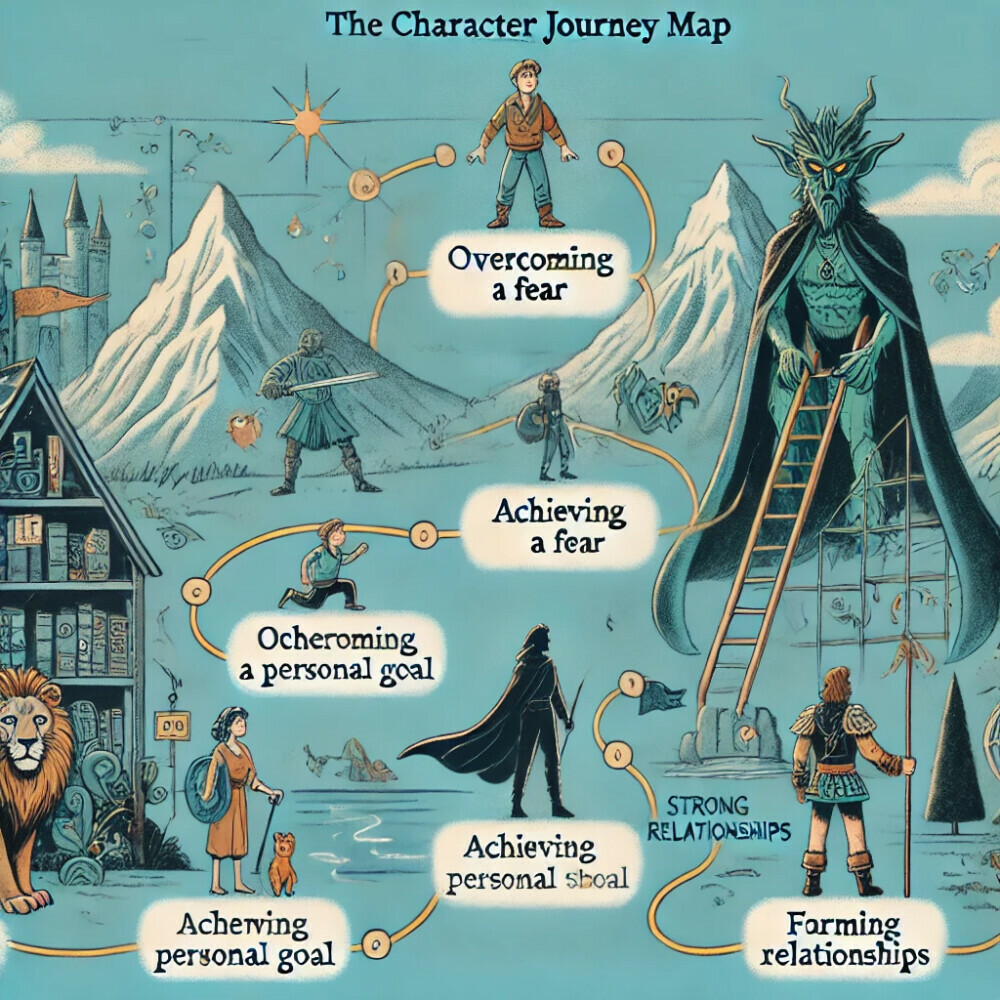The Importance of In-Depth Character Development
As an author with years of experience under my belt, I’ve come to realize that crafting compelling characters is essential to writing a story that resonates with readers.
It is interesting that in my work as a journalist, it is the intriguing and quirky characters that I have met in real life that are the ones I remember most!
It can be the same in our fiction writing. Those quirky or interesting characters and the changes they go through that make them a new character (good or bad) will make them memorable.
Characters are the heart and soul of any narrative, providing the emotional connection that keeps readers turning pages. Today, I want us to look into the significance of in-depth character development and share some insights and tips from my own writing journey.
Section 1: Breathing Life into Characters

When it comes to storytelling, characters are more than just names on a page; they are the living, breathing entities that drive your plot forward. In-depth character development allows readers to understand, relate to, and care about your characters. Think about your favorite books. What do they all have in common? Likely, it’s characters who feel real and whose journeys you’ve invested in emotionally.
Could you imagine what Edward Cullen (Twilight series) would have been like if his character had not been fleshed out, so to speak? Could you image Jacob Black just being a regular guy who loved the main character Bella Swan? It was the various parts of these characters that made them come to life. Their imperfections even their perfections, made many girls swoon!
Creating well-rounded characters involves giving them backstories, motivations, flaws, and desires. It’s these elements that transform a two-dimensional figure into a complex individual. For instance, Harry Potter’s traumatic past and longing for a family add depth to his character, making his triumphs and struggles more poignant.
Section 2: Motivations and Flaws

One of the key components of character development is understanding your character’s motivations and flaws. What drives them to make the choices they do? What are their weaknesses? A character without clear motivations can feel aimless, and one without flaws can seem unrealistic.
Take Katniss Everdeen from The Hunger Games. Her motivation to protect her sister and her deep-seated distrust of authority shape her actions throughout the series. Her flaws, such as her emotional distance and impulsiveness, make her relatable and human.
When developing characters, dig deep into their psyche. Ask yourself questions about their past experiences, their fears, and their dreams. This process can reveal hidden layers and lead to more authentic character portrayals.
My favorite characters like Stu Redman in Stephen King’s The Stand, is filled with imperfections and also with hope. He’s so likable. But it’s because he is “real.” He’s the man that lives down the street or across town.
Section 3: Character Arcs and Growth

A well-developed character should undergo a transformation throughout the story. This is known as a character arc, and it’s crucial for creating a dynamic and engaging narrative. Whether it’s a journey from cowardice to bravery, ignorance to enlightenment, or selfishness to selflessness, watching a character grow and evolve can be incredibly satisfying for readers.
For instance, Stu Redman is a shy man who says little, but has so much inside of him. Without the “flu” coming and changing the whole world, the Stu that was a leader and a survivor never would have been known. He transformed from the man who sat in the wings, to the man who was flying the plane!
Consider Elizabeth Bennet from Pride and Prejudice. Her initial prejudice and misunderstandings about Mr. Darcy give way to self-awareness and personal growth. This transformation not only enhances the plot but also endears her to readers.
To create a compelling character arc, map out your character’s journey from beginning to end. Identify the key moments that will challenge and change them, and ensure these developments are rooted in their established personality and motivations.
Section 4: Relatability and Connection

Ultimately, the goal of in-depth character development is to foster a connection between your characters and your readers. Relatable characters evoke empathy, making readers care about their fate and root for their success. This connection is what makes stories memorable and impactful.
Think of Atticus Finch in To Kill a Mockingbird. His integrity, compassion, and unwavering commitment to justice resonate with readers on a profound level. Despite the story’s specific historical context, Atticus’s character embodies universal values that transcend time and place.
To achieve this level of relatability, focus on creating characters with emotions, struggles, and triumphs that readers can identify with. Show their vulnerabilities and strengths, and let their humanity shine through.
Final Thoughts
In-depth character development is the cornerstone of effective storytelling. By breathing life into your characters, understanding their motivations and flaws, crafting compelling arcs, and fostering relatability, you create a narrative that captivates and endures. As an expert author, I can attest that investing time and effort into developing your characters will pay off in the richness and depth of your stories.
Remember, your characters are your story’s ambassadors. Give them the attention they deserve, and they will, in turn, elevate your writing to new heights.
So, the next time you sit down to write, think about who your characters are at their core. Dive deep into their world, and let them guide you through the incredible journey of storytelling. Happy writing!

